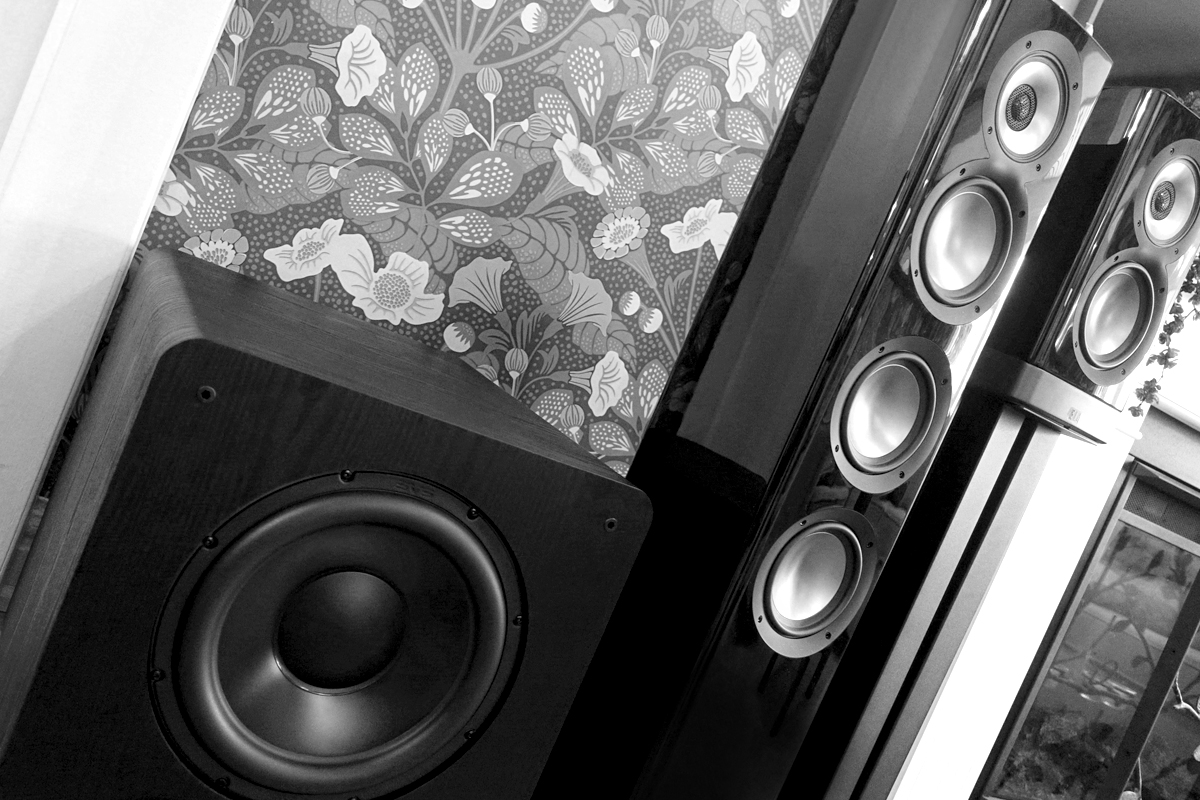When I reviewed Elac’s Navis ARF-51 active floorstanding speakers ($4599.96/pair, all prices USD) in September 2019, I rediscovered something I’d been missing for the previous six years: kick-ass bass.
From 2013 to 2019, my reference music systems were built around stand-mounted minimonitor speakers: KEF LS50s followed by Totem Signature Ones, and then, after we’d moved into our current home, Dynaudio Focus 20 XD active speakers. (For more about that new space and system, see “How I Simplifi’d My Hi-Fi.”) Those systems brought me countless hours of pleasure. But as soon as I started playing music through the Navis floorstanders, I heard a low-end oomph those smaller speakers couldn’t deliver. I ended up buying the review samples, and the Navis ARF-51s remain my reference speakers to this day.
When I made that decision, I realized I could have got that extra oomph by sticking with my stand-mounted speakers and adding a powered subwoofer. However, that would have entailed adding to our smallish living room another component and its interconnect and power cord. In terms of visual footprint and domestic harmony, it made more sense to go with floorstanders than stand-mounts plus sub. My more design-conscious better half agreed.
Still, I was curious which approach would provide the better sound, and resolved to someday conduct an experiment: In a space such as our living room, and all else being equal, what are the tradeoffs between two floorstanders vs. two minimonitors plus sub?
Test bed
Elac Americas was game to participate in this project, and graciously provided a pair of Navis ARB-51 active stand-mount speakers ($2299.98/pair), which I’d reviewed in April 2019. They received Reviewers’ Choice honors at the time, and were later named a 2019 SoundStage! Network Product of the Year for Exceptional Value.
My plan was to compare the sound of my Elac ARF-51s with that of the ARB-51s supplemented with a subwoofer. Elac’s Navis active speakers made an ideal test bed for my little experiment -- their similarity of design meant that this would be as close as possible to a comparison of apples with apples.
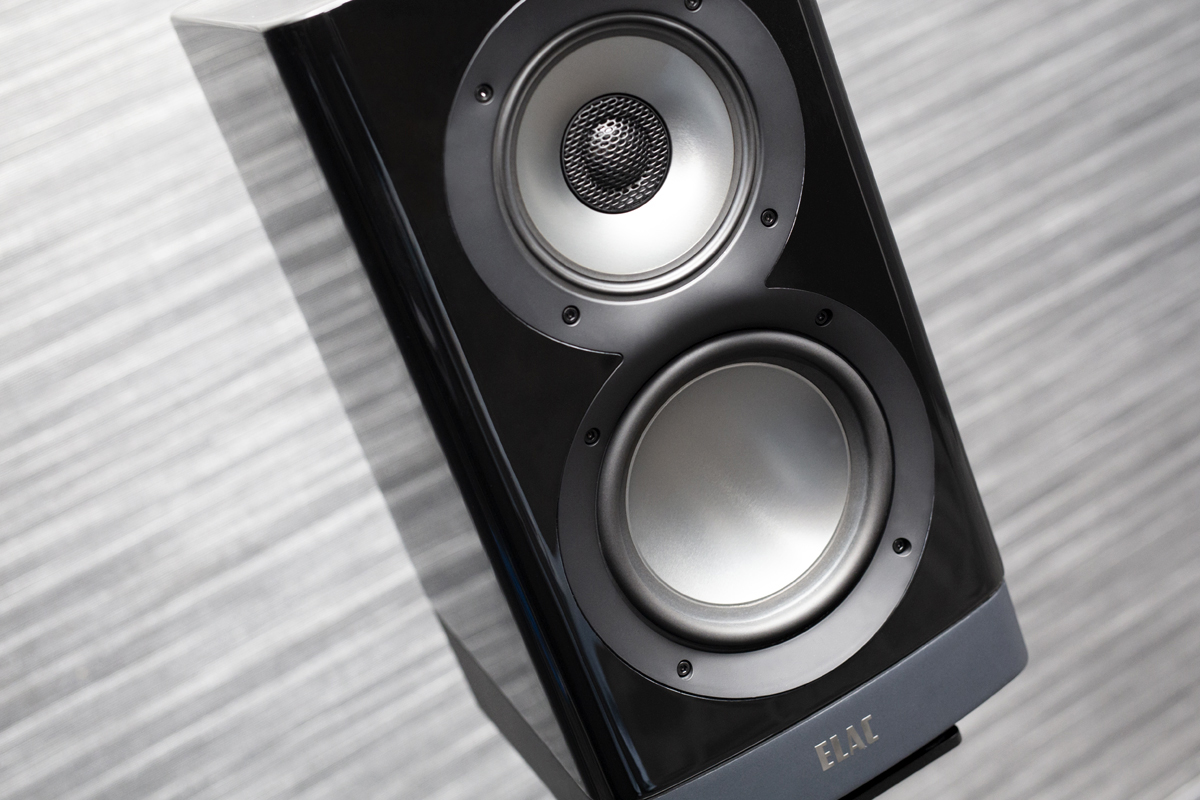
The ARB-51 and ARF-51 use the same drive-units and amplifiers. At the top of each model is a coaxial driver combining a 4” aluminum midrange unit powered by a 100W BASH amplifier and 1” soft-dome tweeter powered by a 40W class-AB amp. Immediately below is a 5.25” aluminum-cone woofer, which vents through a port on the speaker’s rear. The woofer and coaxial drivers share the same front trim ring, in the shape of a figure 8.
The only difference is that the Navis ARF-51 has two additional 5.25” woofers, in a subenclosure with twice the volume of the one housing the top woofer and coaxial midrange-tweeter. The lower subenclosure has two rear-venting ports, and is tuned identically to the upper subenclosure. In the ARF-51, the bass section is powered by a 160W BASH amplifier. Its two additional woofers and much bigger cabinet give the ARF-51 that extra punch I so enjoyed.
The other component for this experiment was SVS Audio’s new PB-2000 Pro dual-ported subwoofer ($899.99), whose 12” drive-unit with vented aluminum cone is driven by an amplifier specified to output 550W RMS/1500W peak power. The PB-2000’s claimed frequency response is 16-290Hz, ±3dB. Port plugs are available from SVS for operating the PB-2000 Pro in sealed mode, but I conducted my listening tests with the subwoofer in ported mode.
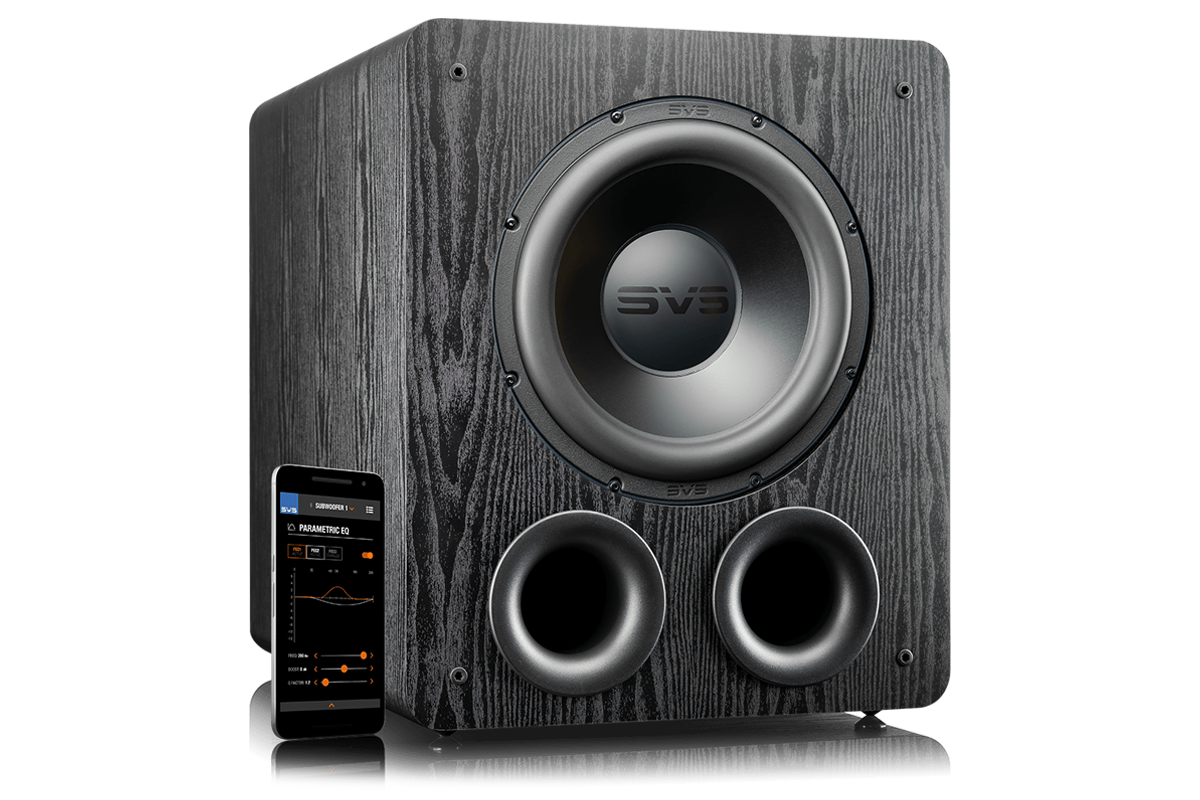
The PB-2000 Pro has line-level inputs (RCA) for connection to a two-channel preamp. The right-channel input is labeled LFE (low-frequency effects), allowing a single-cable connection to an A/V receiver or processor with bass-management capabilities.
Measuring 20.9”H x 17.3”W x 23.6”D and weighing 64.8 pounds, the PB-2000 Pro is a bit of a beast, and so visually dominant that I wouldn’t want it taking up full-time residence in our living room. About the only place it fit was along the front wall, next to the left-channel speaker. Sonically, this worked well -- with a little adjustment of the sub’s controls, I got a seamless blend with the ARB-51s. The PB-2000 Pro would work wonderfully in a more casual space -- say, a family or music room, or a dedicated home theater.
Elac’s ARB-51 and ARF-51 active speakers have unbalanced (RCA) and balanced (XLR) inputs. For systems in which they’re used with a subwoofer, they have a high-pass (HP) filter whose three-position switch lets it kick in at 60 or 80Hz, or, in the Flat setting, lets the speaker run full range.

I connected the Navises to an exaSound e32 Mk.II DAC ($2495) with 2m-long Argentum balanced (XLR) interconnects, and to the SVS sub with 4m AmazonBasics subwoofer interconnects (RCA). The e32 Mk.II was connected to an exaSound Sigma streamer ($750) with a 2m AudioQuest Cinnamon USB link. Audio signals came from a Mac Mini computer running Roon Core 1.7.
Tweaking
The specified frequency range of Elac’s ARB-51 is 44Hz-28kHz; adding a PB-2000 Pro subwoofer should extend the bass response by more than an octave. And the sub’s much bigger enclosure and more powerful amplifier should produce much higher bass output with less distortion.
In the YouTube video announcing their 2000 Pro series subs, SVS talks about its Sledge amplifier, which combines a switching input stage with a fully discrete MOSFET output stage that can provide gobs of current. This enables the sub to produce prodigious amounts of room-shaking bass with big action and sci-fi flicks, SVS says.
Another key ingredient is the PB-2000 Pro’s Analog Devices 50MHz digital signal processor. Besides controlling the motion of the sub’s 12” cone, the DSP includes a wide range of user settings, including level, crossover frequency, phase, room-boundary compensation, and three-band parametric equalization. Adjustments to level, low-pass frequency, and phase can be made using controls on the PB-2000’s rear panel, but to use the parametric EQ you need the SVS app, available for iOS and Android. App and sub communicate via low-energy Bluetooth -- you can make adjustments from your listening chair and hear the results immediately.
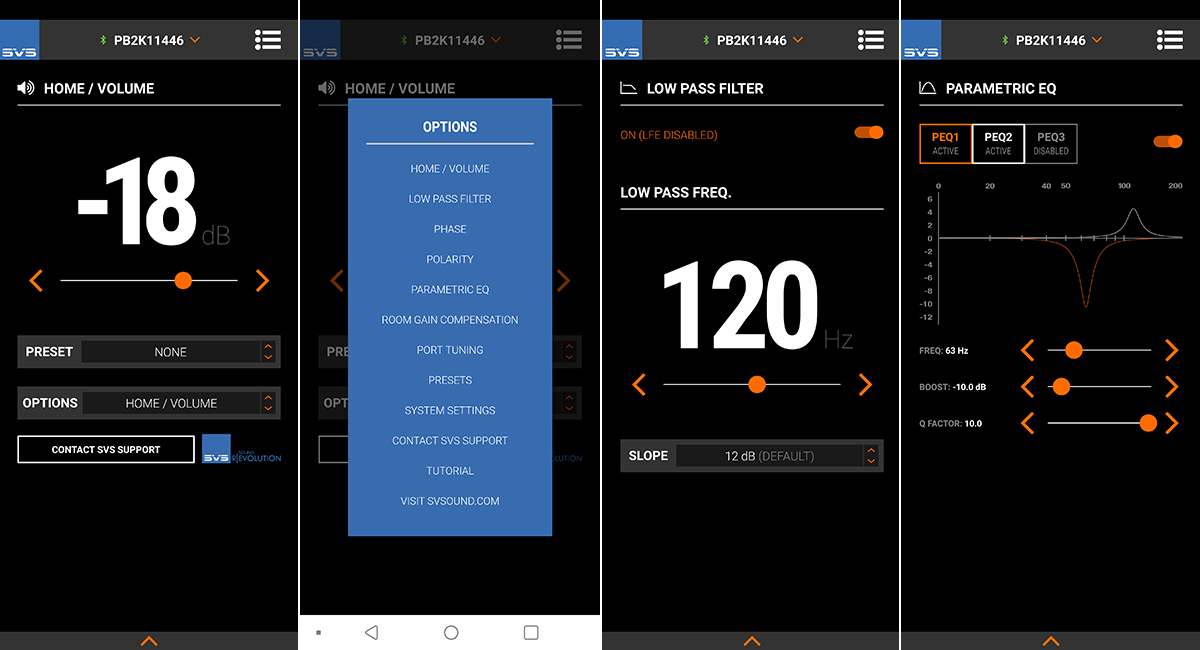
I set the ARB-51s’ HF filter controls to 80Hz, but left those on the ARF-51s in the flat position, so the speakers would operate full-range. Of course, I left the sub off when listening to the floorstanding Navises.
From the end cushion of the sectional sofa in our living room -- i.e., in the sweet spot -- I found it easy to dial in settings for the PB-2000 Pro. I ended up setting the level to -18dB, the low-pass frequency to 120Hz so I could apply some LF boost to overcome a room problem (see below), and the phase to 0°. Further experimentation might well have yielded an even more seamless blend of the sounds of sub and speakers, but what I heard was awfully good, especially after I’d applied some parametric EQ.
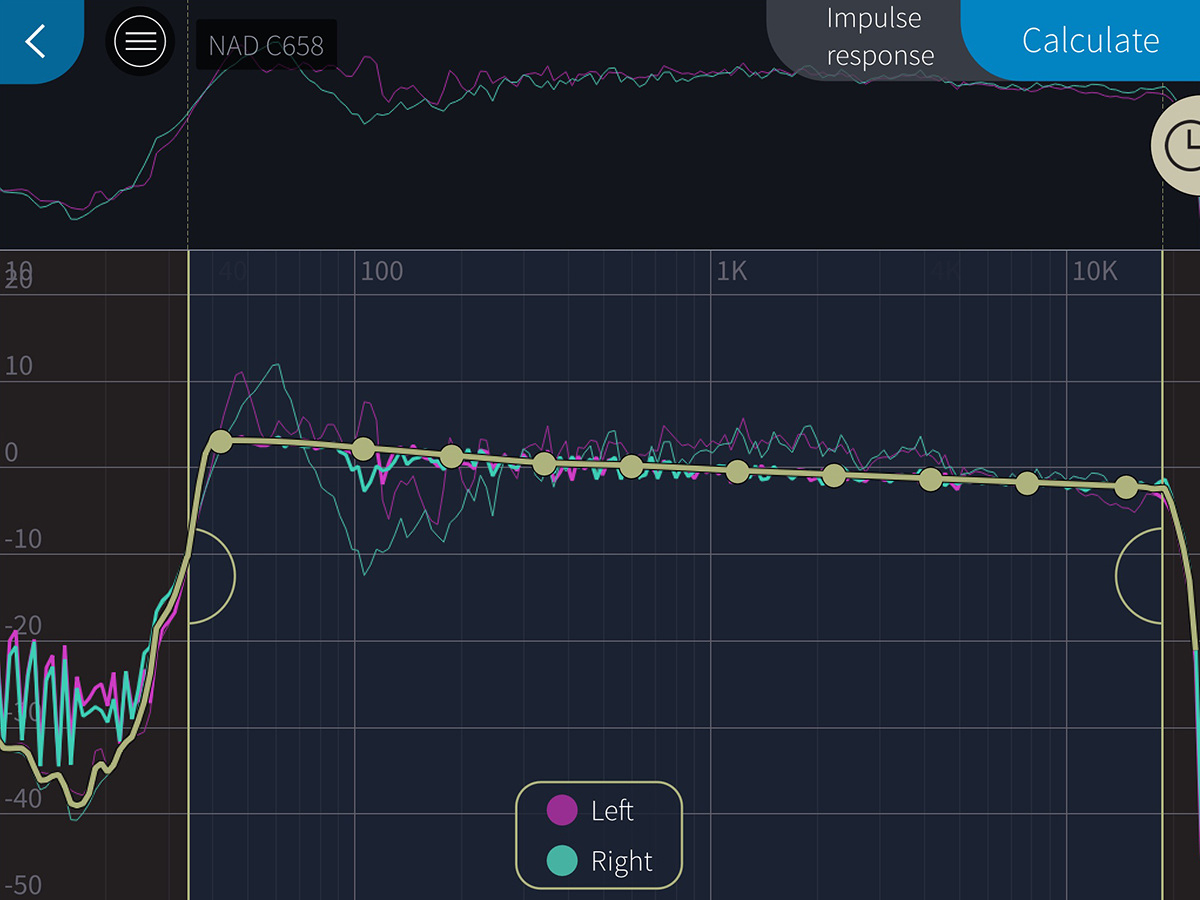
That process was eased by my having already set up Dirac Live room correction on my NAD Classic C 658 streaming DAC-preamp ($1649). Dirac Live identified some major modes in my listening room, the main one being a 12dB peak in the right channel at around 62Hz. There were other issues as well, including a broad dip in both channels above 100Hz.
Like many general-use living areas, our living room offers few choices of listener and speaker positions, and with the default locations for speakers and listening seat, there are some real problems -- notably, that big peak at 62Hz. Had I not gotten the head start from Dirac Live, I could have used a room-measurement app like Room EQ Wizard -- a topic I may explore in a future article.
It’s not hard to account for that 62Hz peak. My living room measures 9’W x 9’H -- its length is more indeterminate, as the left side opens onto our dining room through a wide archway. There’s a clue to my room problem in those 9’ dimensions (particularly the width) -- the speakers are close to the front wall, and my listening seat is right against the back wall. As I confirmed with an online frequency-wavelength calculator, that 9’ distance corresponds to an audio wavelength of 125.11Hz, and -- more tellingly -- a half-wavelength of 62.55Hz, which is right at the peak of that nasty room mode!
Not just about that bass
I used the parametric EQ function in the SVS app to implement a filter to cancel out that mode, starting with a mirror image of the peak in the Dirac graph, then tweaking a bit more by ear. I also implemented a second filter that would apply a modest boost to counteract the suckout above 100Hz. As a result, the PB-2000 Pro didn’t only deliver deeper, more impactful bass than my Elac floorstanders, but tighter, more tuneful bass as well.
This is one of the big advantages of adding a subwoofer to a music system. With a little finagling, SVS’s parametric EQ lets you counteract room problems -- something that’s hard to do with a full-range speaker unless you have an amp or processor with room correction.
As it happens, I do. As mentioned, my NAD C 658 has Dirac Live room correction, which I find very effective. But I used a different DAC-preamp for this project so that I could evaluate the PB-2000 Pro’s parametric EQ, which I wouldn’t have been able to do had I already been applying room correction. Also, I think the test bed I used -- full-range audio signals sent to the sub’s unbalanced inputs -- is more representative of the way most listeners will use a sub in a two-channel music system.
The HP filter switch on both Navis models adds another benefit. If you’re using a sub, setting the HP filter to 60 or 80Hz means the speaker doesn’t have to produce deep bass -- which can involve long cone excursions and heavy amplifier demands. This typically results in reduced distortion and compression.
That capability is offered on some active speakers, including the HEDD Type 07 nearfield studio monitors I’ve just reviewed, and the Focal Shape 65 minimonitors I’m about to review. But it’s far from a universal feature, which is too bad. Meghan Trainor’s lyrics notwithstanding, it’s not “all about that bass” -- treble, too, matters; and, more germane to this discussion, so do midrange and midbass.
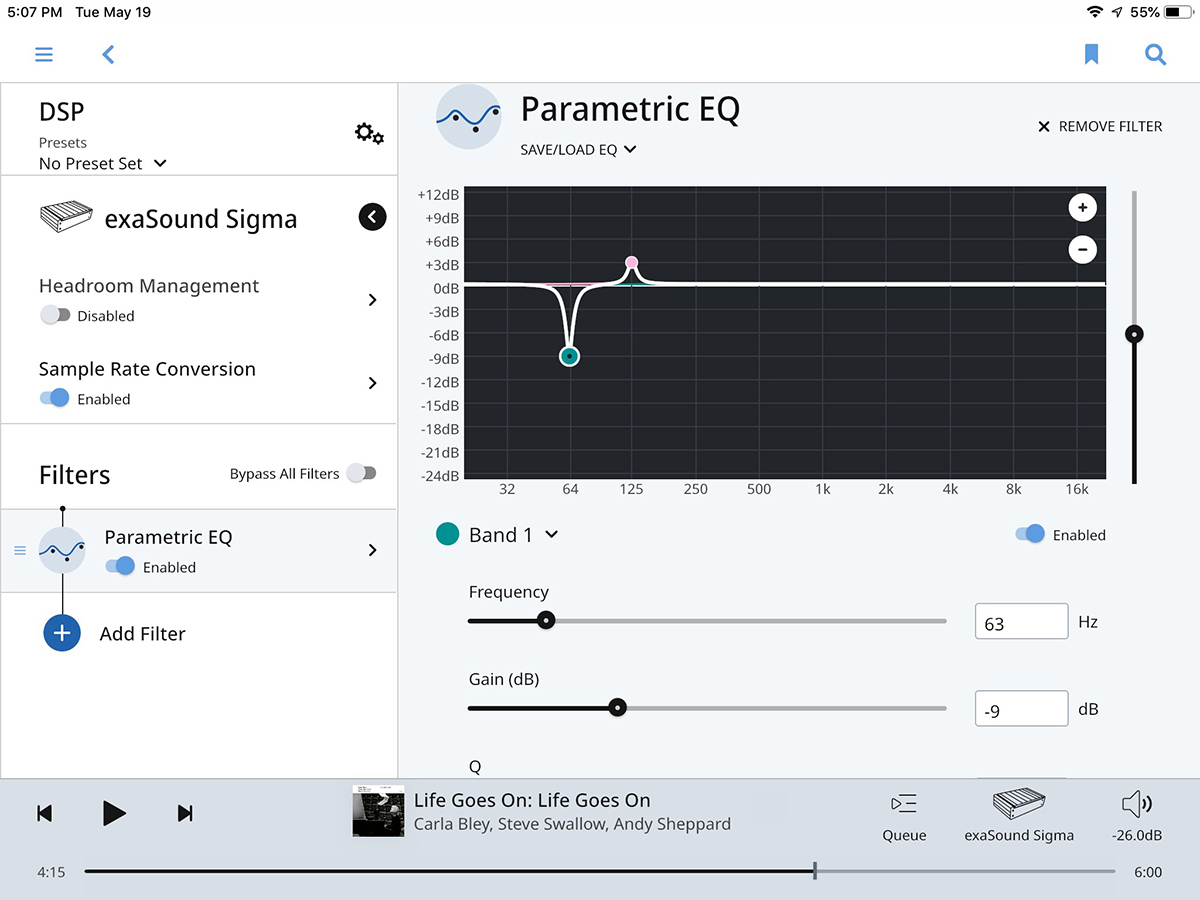
Before sitting down to listen, I did one last tweak. Believing it would be unfair to compare unequalized ARF-51 floorstanders to a system with an equalized sub, I used Roon’s DSP feature to implement two parametric EQ filters, one addressing the 62Hz peak, the other the 105Hz suckout, and used these settings for some of my listening through the ARF-51s.
How low can you go?
With everything set up, it was time to listen. I began with one of my go-to tracks for assessing bass control, “Regular Pleasures,” from Patricia Barber’s Verse (16-bit/44.1kHz ALAC, Premonition/Blue Note). Throughout, Michael Arnopol plays a big, bold bass line, mostly on his double bass’s lower strings, and Eric Montzka adds a huge bass-drum beat at the end of each bar. There’s lots going on here in the 32-64Hz octave.
Through the ARF-51s, with no EQ provided by Roon, Montzka’s bass drum sounded big, powerful, and effortless, but there was some overhang -- the initial transient was a little blurred. After I activated the EQ filters I’d implemented in Roon, that initial thwack was sharper and more dramatic, and it was easier to hear the vibrating drum head after the initial stroke. I heard the same thing with Arnopol’s double bass -- with Roon’s EQ settings, transients were sharper, and I heard more of the woody tone of the instrument’s body. Bass was never one-notish or boomy, but was noticeably more taut and tuneful with EQ switched in, with no loss of impact.
But the combo of PB-2000 Pro and ARB-51s was better. With my EQ settings in the SVS app, Montzka’s bass drum sounded even bigger and more robust, but also tauter and better controlled. The same was true of Arnopol’s bass. Disabling SVS’s EQ settings resulted in more overhang and thus less detail.

A new favorite album of mine for assessing bass performance is Life Goes On, by pianist Carla Bley, bassist Steve Swallow, and saxophonist Andy Sheppard (24/96 FLAC, ECM/Qobuz). The lowest string of Swallow’s five-string electric bass is tuned to B0, or 30.868Hz. That’s 10Hz lower than E1 (41.203), the lowest note of a four-string electric or double bass. Throughout the album, Swallow uses the full range of his instrument, and the title track includes many passages in which he plays mostly the bottom two strings. So there’s a lot going on here between 30 and 71Hz (D2, the tuning of the open third string).
Through the ARF-51s, the lowest notes of Swallow’s bass sounded a little faint. Without Roon’s EQ settings engaged, the two bottom strings also sounded a little muddy and indistinct. Turning on EQ tightened up everything -- his bass sounded tauter and more tuneful.
Through the ARB-51-and-PB-2000 Pro combo with the sub’s parametric EQ settings engaged, everything about the bass was better. Swallow’s five-string bass sounded fuller, tighter, and more impactful than it had through the ARF-51s with Roon’s EQ settings. The sub maintained full output right down to that open B0, and blended wonderfully with the main speakers. That EQ adjustment setting made a big difference. With EQ switched out, bass was ample, but woollier and less distinct.

Recordings of pipe organs are commonly used to evaluate bass extension, with good reason. A few symphony hall organs have 32’ pipes that can produce notes as low as C0 -- 16.35Hz! And many church organs have 16' pipes that can go down to C1 -- 32.7Hz. One such instrument is the organ at St. Laurentius Church, in Diekirch, Luxembourg, used on a recording of the complete organ works of the French composer Maurice Duruflé (1902-1986), performed by the Belgian organist Stéphane Mottoul (24/96 FLAC, Aeolus/Qobuz). Duruflé’s Suite, Op.5 has an abundance of low pedal notes that use those 16’ pipes.
This masterpiece sounded wonderful through the ARF-51s, which delivered a big, lofty sound that well suited music and venue. While the lowest pedal notes were audible, they were a little faint and indistinct. Applying EQ in Roon made those low notes a little clearer, though they were still fainter than I’d have liked -- no surprise, given the floorstanding Elacs’ 5.25” woofers. Specified frequency response of the ARF-51s is 43Hz-28kHz.
As I expected, this recording sounded better through the ARB-51 stand-mounts and the SVS PB-2000 Pro. Those low pedal notes were much more substantial, with a more convincing growl as they descended. They were also less boomy and more distinct. The sound was even bigger and loftier, which gave me a better sense of the instrument and church. I suspect that having the subwoofer do the heavy lifting in the lows gave the main speakers more headroom in the upper bass and midrange, so there was less compression. Again, the EQ settings I made in the SVS app made an important contribution. Without EQ, the organ-pedal notes were a little muddier.
Conclusion
Although I limited myself to two-channel music for this project, I have no doubt that SVS’s PB-2000 Pro would serve admirably in home-theater settings. But I really liked how it performed with music. It wasn’t only the extra octave of bass extension it delivered, but also the greater control and finesse. And the SVS app made it easy to get a good blend between the Elac Navis ARB-51s and the SVS PB-2000 Pro.
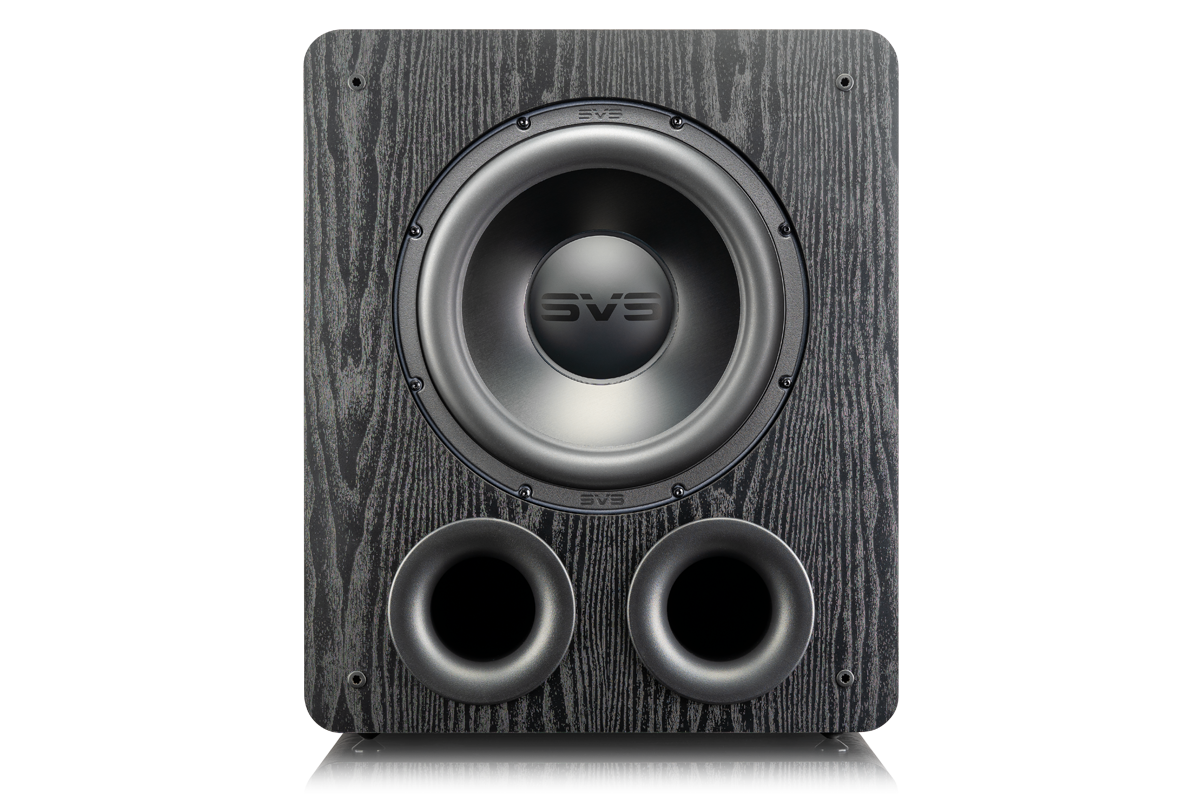
More and more subs offer this kind of control -- and some offer more. Elac has three models that let you measure the room response with a smartphone app, then upload correction curves to the sub. Paradigm’s and MartinLogan’s latest subs have built-in Anthem Room Correction (ARC).
I preferred the sound of the ARB-51-and-PB-2000 Pro combination to my ARF-51s. But with my listening habits and preferred musical genres, the difference wasn’t great enough to make me rethink my decision to buy the floorstanders. Visual footprint and simplicity are also important considerations, and for me they still tip the balance in favor of the ARF-51s. As noted above, that big sub is just too big for the living room of our small Edwardian home in downtown Toronto. I definitely wouldn’t rule out a subwoofer for our living room, but it would have to be a model of more discreet size.
In fact, I briefly tried combining the SVS sub with my ARF-51s, with the main speakers’ high-pass filter engaged. I really liked what I heard. Who knows? Maybe there is a subwoofer in my future. Gotta save up first, though -- and butter up my better half.
. . . Gordon Brockhouse



